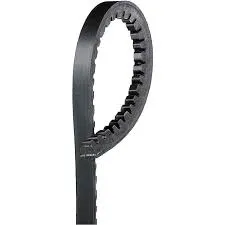- Arabic
- French
- Russian
- Spanish
- Portuguese
- Turkish
- Armenian
- English
- Albanian
- Amharic
- Azerbaijani
- Basque
- Belarusian
- Bengali
- Bosnian
- Bulgarian
- Catalan
- Cebuano
- Corsican
- Croatian
- Czech
- Danish
- Dutch
- Afrikaans
- Esperanto
- Estonian
- Finnish
- Frisian
- Galician
- Georgian
- German
- Greek
- Gujarati
- Haitian Creole
- hausa
- hawaiian
- Hebrew
- Hindi
- Miao
- Hungarian
- Icelandic
- igbo
- Indonesian
- irish
- Italian
- Japanese
- Javanese
- Kannada
- kazakh
- Khmer
- Rwandese
- Korean
- Kurdish
- Kyrgyz
- Lao
- Latin
- Latvian
- Lithuanian
- Luxembourgish
- Macedonian
- Malgashi
- Malay
- Malayalam
- Maltese
- Maori
- Marathi
- Mongolian
- Myanmar
- Nepali
- Norwegian
- Norwegian
- Occitan
- Pashto
- Persian
- Polish
- Punjabi
- Romanian
- Samoan
- Scottish Gaelic
- Serbian
- Sesotho
- Shona
- Sindhi
- Sinhala
- Slovak
- Slovenian
- Somali
- Sundanese
- Swahili
- Swedish
- Tagalog
- Tajik
- Tamil
- Tatar
- Telugu
- Thai
- Turkmen
- Ukrainian
- Urdu
- Uighur
- Uzbek
- Vietnamese
- Welsh
- Bantu
- Yiddish
- Yoruba
- Zulu
dec . 11, 2024 06:32 Back to list
Understanding the Functionality and Applications of V-Ribbed Belts in Machinery
Understanding the V-Ribbed Belt A Key Component in Modern Engines
In the intricate world of automotive engineering, several components work together to ensure that vehicles operate smoothly and efficiently. Among these components, the v-ribbed belt, also known as a ribbed belt or serpentine belt, plays a pivotal role. This article will delve into what a v-ribbed belt is, its functions, benefits, and maintenance considerations, shedding light on why this component is essential in modern automotive applications.
What is a V-Ribbed Belt?
A v-ribbed belt is a type of belt commonly used in engines to transfer power from the engine’s crankshaft to various accessories, such as the alternator, power steering pump, water pump, and air conditioning compressor. It features a unique design with multiple ribs that run longitudinally along its length, providing a significant surface area to ensure a strong grip, which reduces slippage and enhances power transmission.
This belt differs from the traditional V-belt in that it is more compact and can handle a higher load, enabling manufacturers to design smaller, lighter engine compartments. The v-ribbed belt's flat back surface also allows it to wrap around pulleys more efficiently, accommodating various accessory configurations.
Functions of a V-Ribbed Belt
The primary function of the v-ribbed belt is to transfer rotational power from the engine to various auxiliary components. Its design allows it to operate under high tension, making it suitable for different environmental conditions. The belt helps maintain the performance of crucial engine accessories
1. Alternator The v-ribbed belt drives the alternator, which is responsible for charging the vehicle's battery and powering the electrical system when the engine is running. 2. Power Steering Pump The belt assists in the operation of the power steering pump, providing the necessary hydraulic pressure for easier steering, especially at slow speeds.
3. Water Pump Maintaining optimal engine temperature is critical, and the v-ribbed belt plays a role in driving the water pump, ensuring coolant circulation.
4. Air Conditioning Compressor It enables the air conditioning system to function by driving the compressor, ensuring passenger comfort in various weather conditions.
Benefits of V-Ribbed Belts
ribbed belt\/v-ribbed belt

The adoption of v-ribbed belts offers numerous advantages over traditional V-belts
- Increased Efficiency The multiple gripping surfaces provide better traction on pulleys, leading to improved efficiency in power transfer and reducing energy waste.
- Space Savings Thanks to their compact design, v-ribbed belts save space within the engine bay, allowing engineers flexibility in vehicle design.
- Durability Made from high-quality rubber compounds and reinforced with fibers, v-ribbed belts exhibit superior resistance to wear and temperature extremes, contributing to longer service life.
- Reduced Noise The design minimizes noise and vibration compared to conventional belts, contributing to a quieter engine operation.
Maintenance Considerations
While v-ribbed belts are built for durability, they are not immune to wear and tear. Regular maintenance checks are essential to prolong their lifespan. Vehicle owners should periodically inspect the belt for signs of wear, such as cracks, fraying, or signs of glazing (a shiny surface), which indicates slipping.
Replacing the v-ribbed belt is often a straightforward process that can prevent more significant issues down the line, such as accessory failure or engine overheating. As a rule of thumb, it is advisable to follow the manufacturer's recommendations for replacement intervals, which typically range from 60,000 to 100,000 miles, depending on the vehicle model and driving conditions.
Conclusion
The v-ribbed belt is an unsung hero within the engine, facilitating the smooth operation of essential components. Its unique design and functionality not only enhance performance but also contribute to the longevity of the vehicle. Understanding the role of the v-ribbed belt and ensuring its proper maintenance can lead to a more efficient and reliable driving experience. As automotive technology continues to evolve, the importance of such components becomes ever more critical in the pursuit of optimal vehicle performance.
-
Korean Auto Parts Timing Belt 24312-37500 For Hyundai/Kia
NewsMar.07,2025
-
7PK2300 90916-T2024 RIBBED BELT POLY V BELT PK BELT
NewsMar.07,2025
-
Chinese Auto Belt Factory 310-2M-22 For BMW/Mercedes-Benz
NewsMar.07,2025
-
Chinese Auto Belt Factory 310-2M-22 For BMW/Mercedes-Benz
NewsMar.07,2025
-
90916-02660 PK Belt 6PK1680 For Toyota
NewsMar.07,2025
-
drive belt serpentine belt
NewsMar.07,2025

